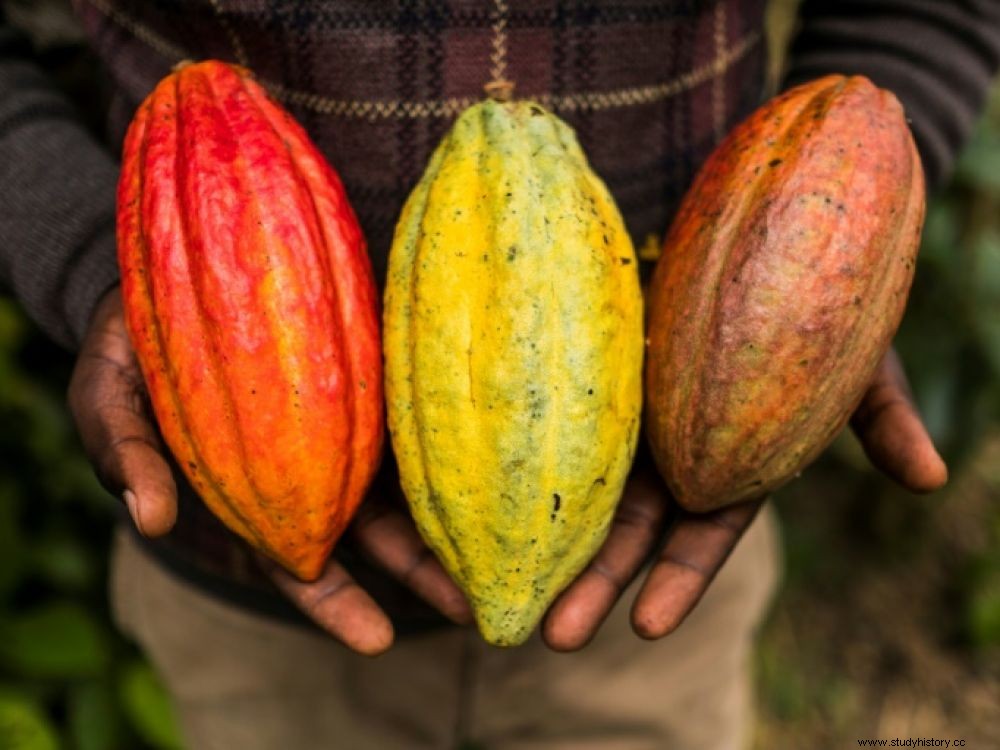5,300 years ago, the Indians of Amazonia were already great cocoa lovers:traces of brown gold were discovered on an archaeological site in southern Ecuador, pushing back the domestication of the small tree by nearly 1,500 years. .

Cocoa cultivation dates back more than 5,300 years.
Of more than 220 ceramic samples analyzed, "30% contained cocoa. A significant amount that reflects common use ", explains to AFP Claire Lanaud, geneticist of the Center for International Cooperation in Agricultural Research for Development (CIRAD), co-author of the study published Monday, October 29, 2018 in the journal Nature Ecology &Evolution . "This can't be the result of anecdotal picking in the forest! "adds the specialist for whom the Indians should indeed cultivate the cocoa tree.
This is the first time that researchers have unearthed archaeological traces of the use of cocoa in South America. And one of them, discovered on a 5,300-year-old ceramic, earns the title of "oldest trace of cocoa identified to date ". The discovery was made at the archaeological site of Santa Ana Florida unearthed in 2002 on the lower slopes of the Andean Cordillera in southern Ecuador, an area covered by a tropical forest that has been heavily eroded in places. Mayo Chinchipe who occupied this site represent the oldest Amerindian civilization of the upper Amazon known to date. Remains of houses and a ceremonial site remain there revealing a complex social organization with a vast network of interregional exchanges, an important ceremonial architecture, and the trade of prestigious objects.
Like "three proofs are better than one! ", the international team behind the study announces that they have highlighted the presence of starch grains characteristic of the plant, traces of theobromine (a compound specific to ripe cocoa beans) and ancient DNA. of cocoa.
Cocoa:both grave offering and daily food
The ceramics showing traces of cocoa were discovered in the old garbage cans and the tombs of the village suggesting that the Indians of Amazonia used the beans both as a funeral offering and as daily food. "As the starch grains were found in bottles, the Mayo Chinchipe certainly consumed the cocoa beans as a drink “, specifies Claire Lanaud. But there is no sign of homemade hot chocolate:the drinks were more certainly made from simple crushed beans, a highly energetic beverage.
"We assume they ground the seeds to access the nutritious fats, carbohydrates and active ingredients such as theobromine and caffeine “, explains Michael Blake of the University of British Columbia in Vancouver, co-author of the study. Until now, the oldest traces of theobromine had been found in Central America on pottery eves of 3,900 years. Previous genetic studies already suggested that cocoa was domesticated in South America before being introduced to Central America Shells, such as spondylus and strombus, from the Pacific coast and found in graves at the site of Santa Ana Florida show that communications existed between the peoples of the Pacific coast and those of the Amazon. "Perhaps it was through these trades that the cocoa tree went from the Amazon to the peaceful “, specifies Claire Lanaud.
